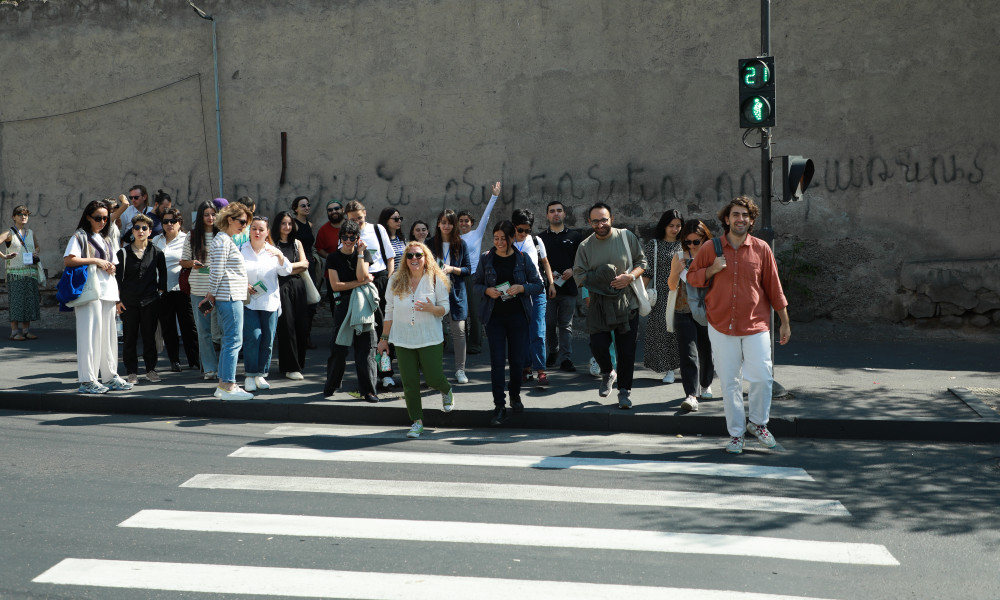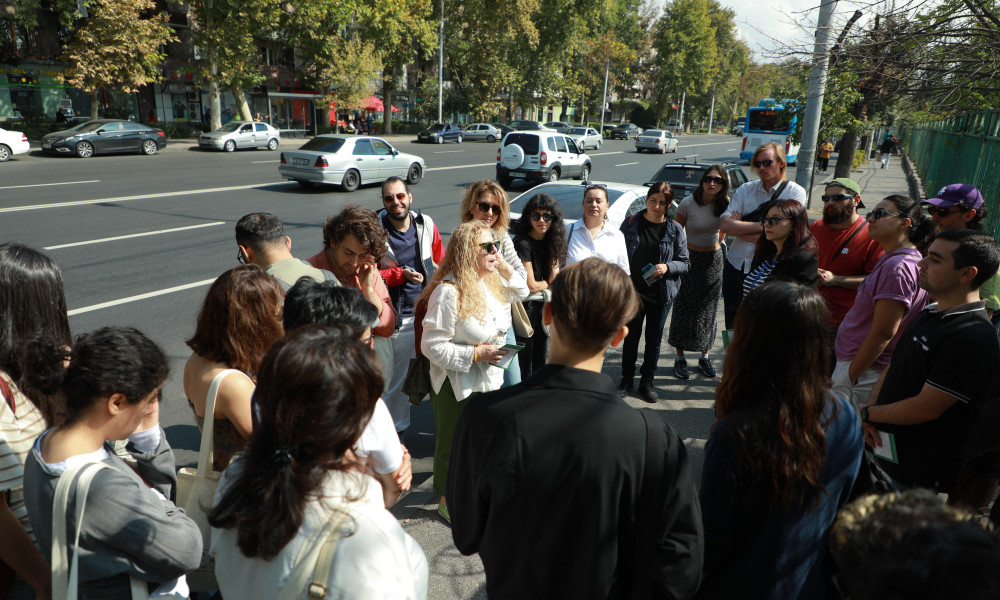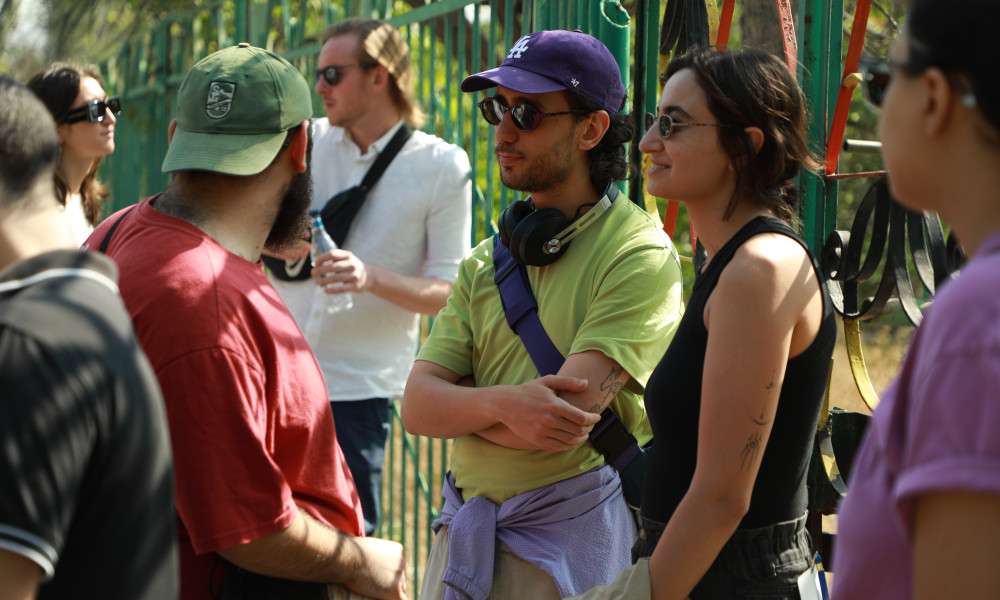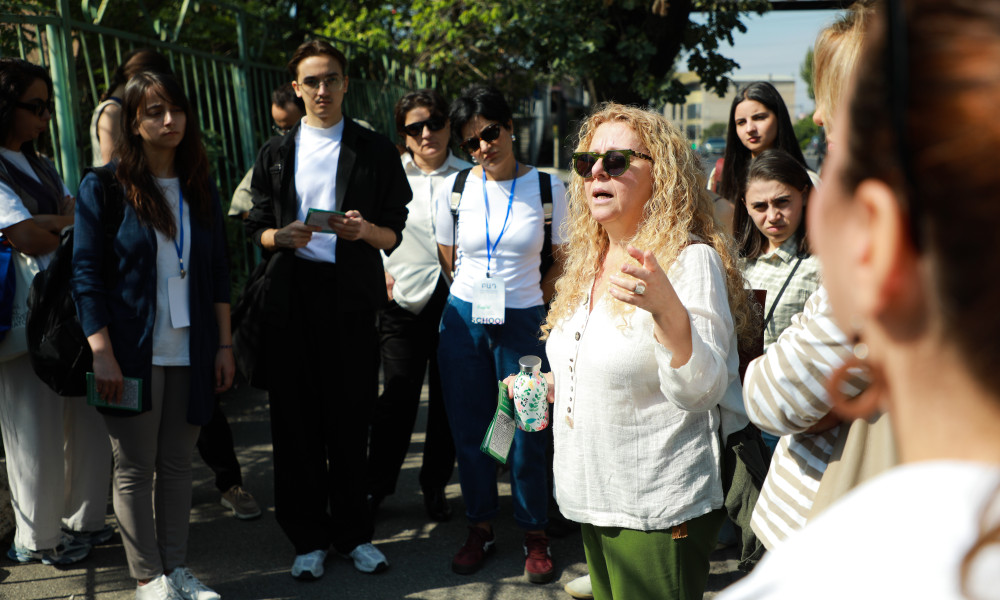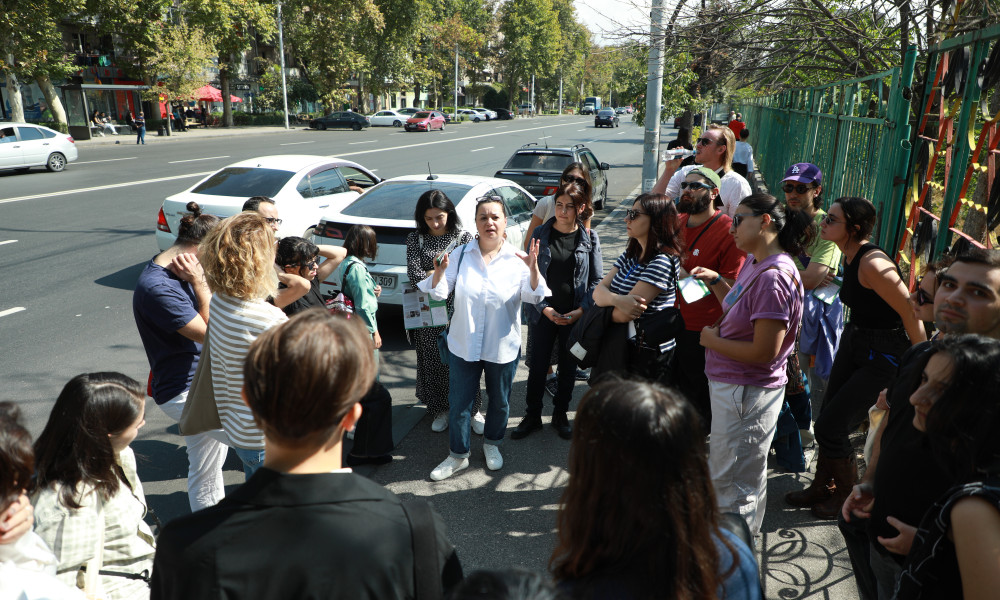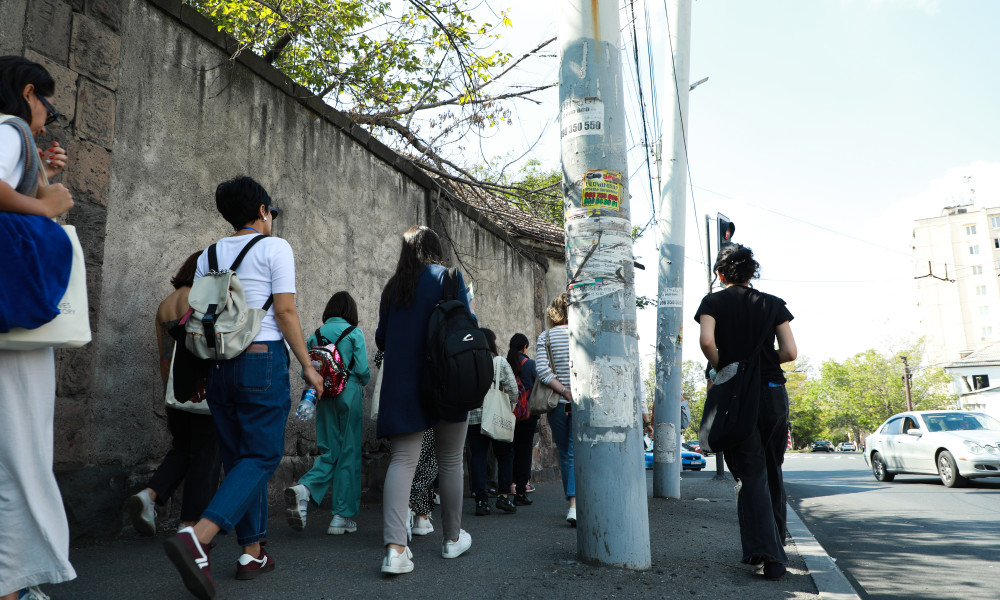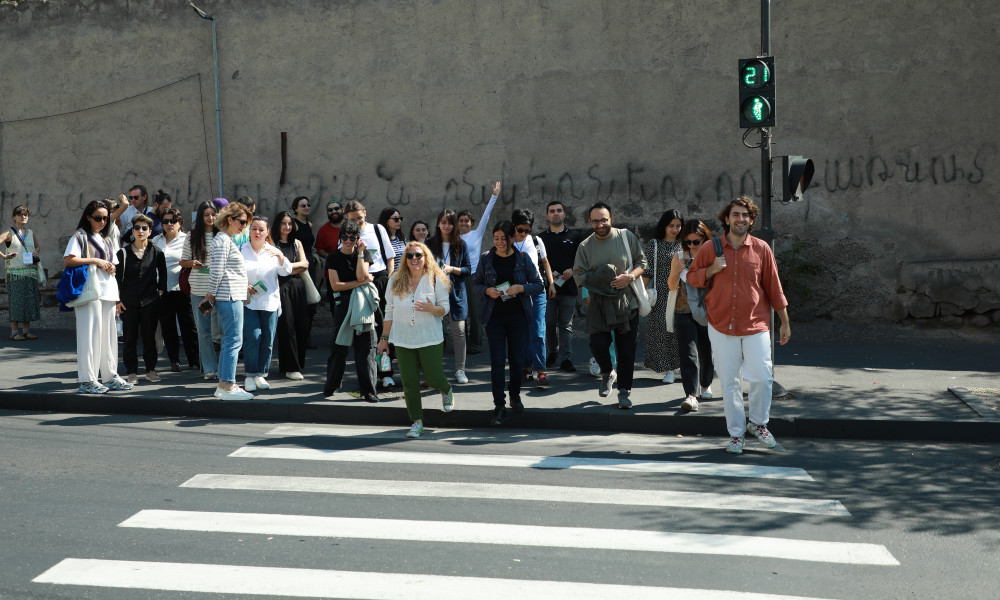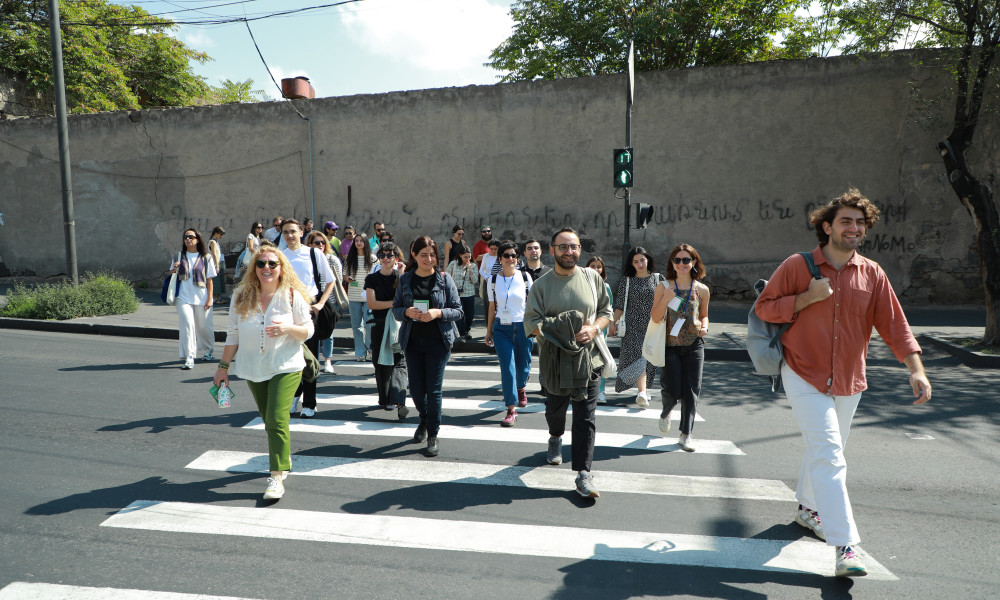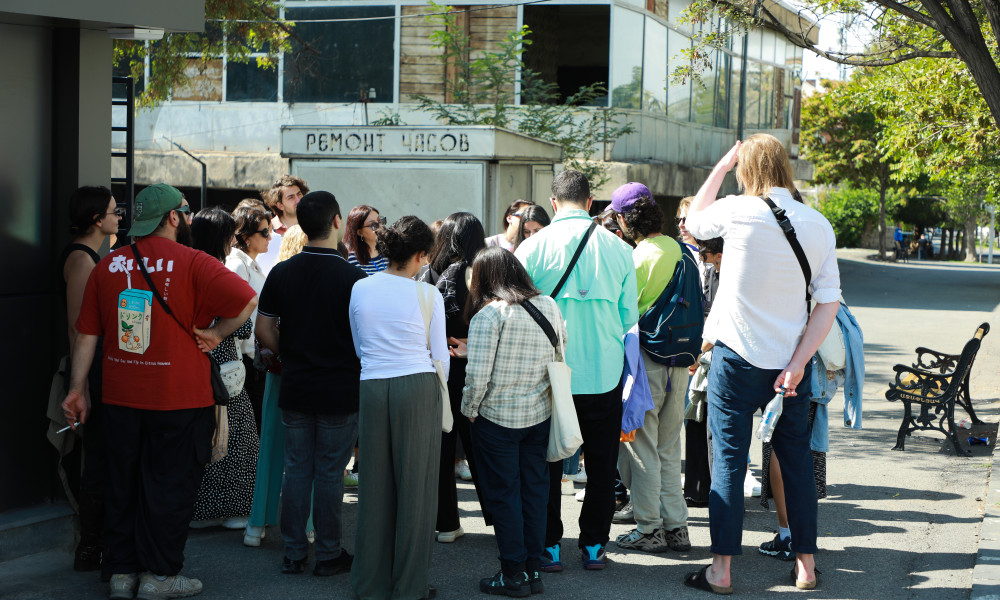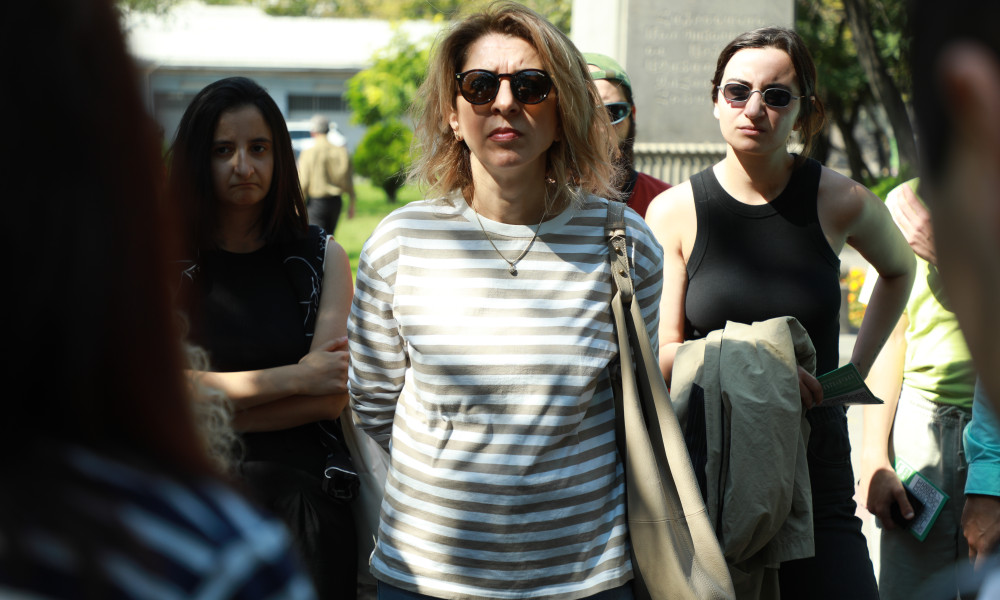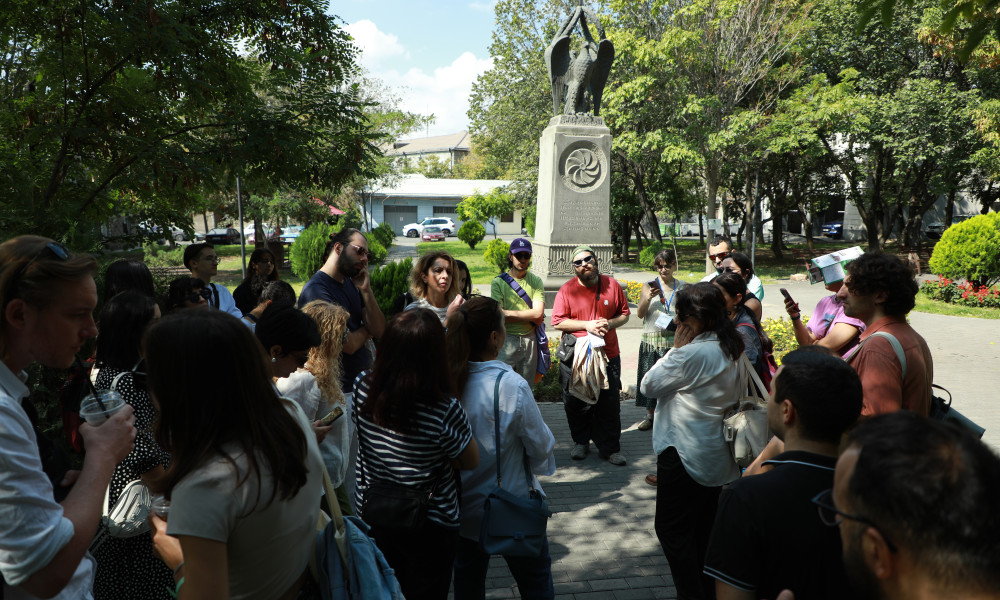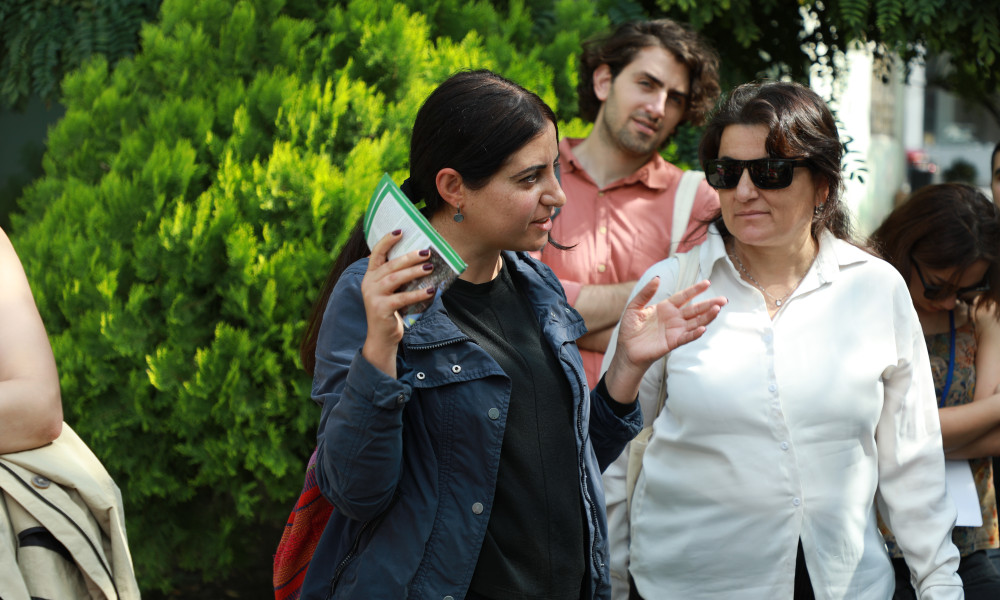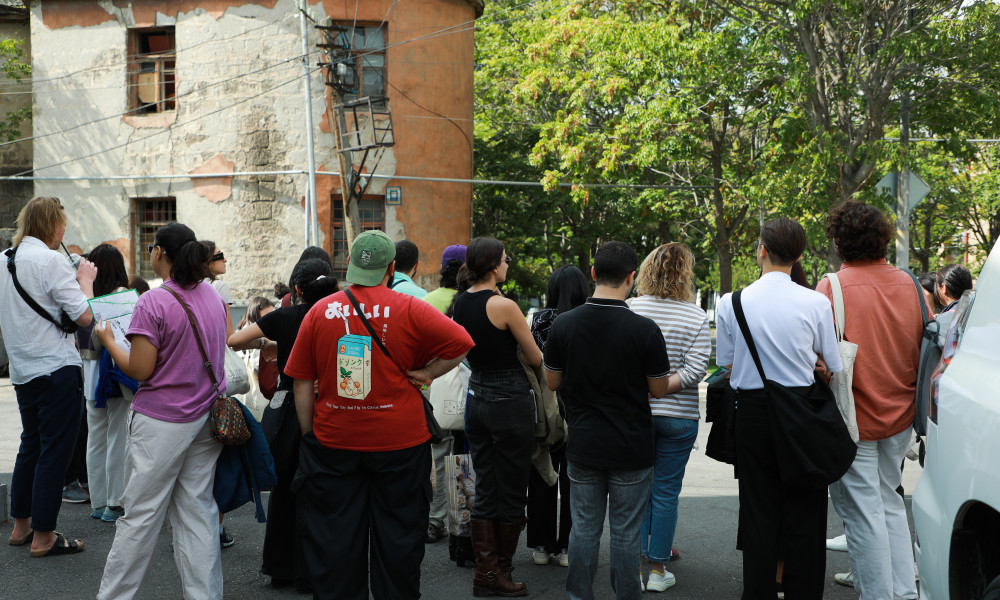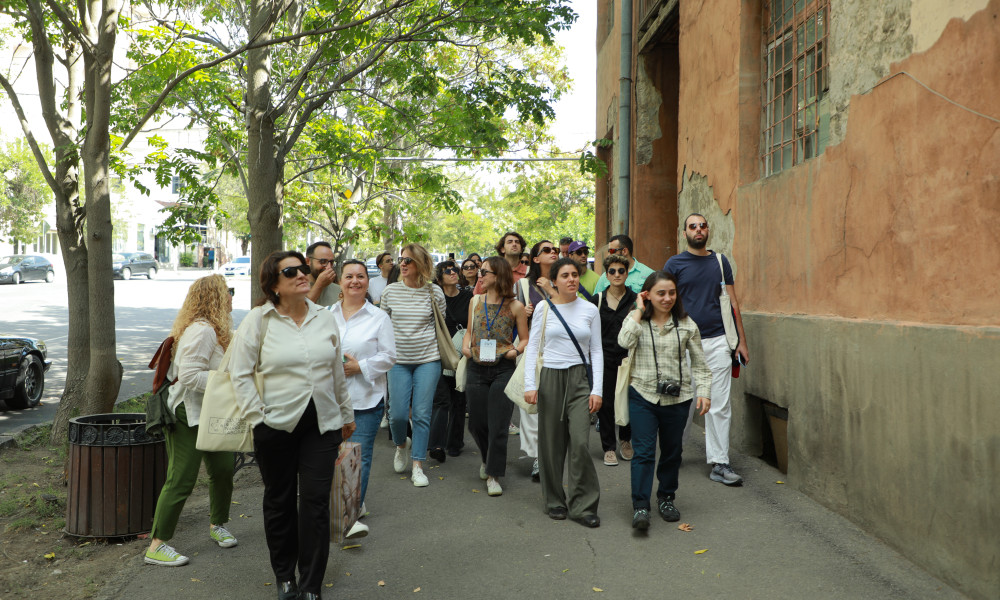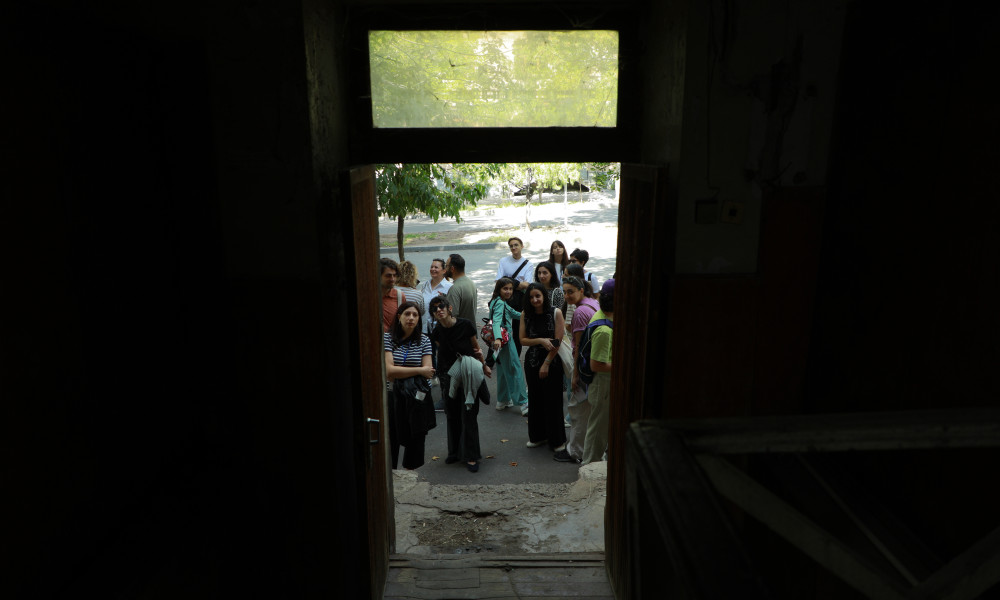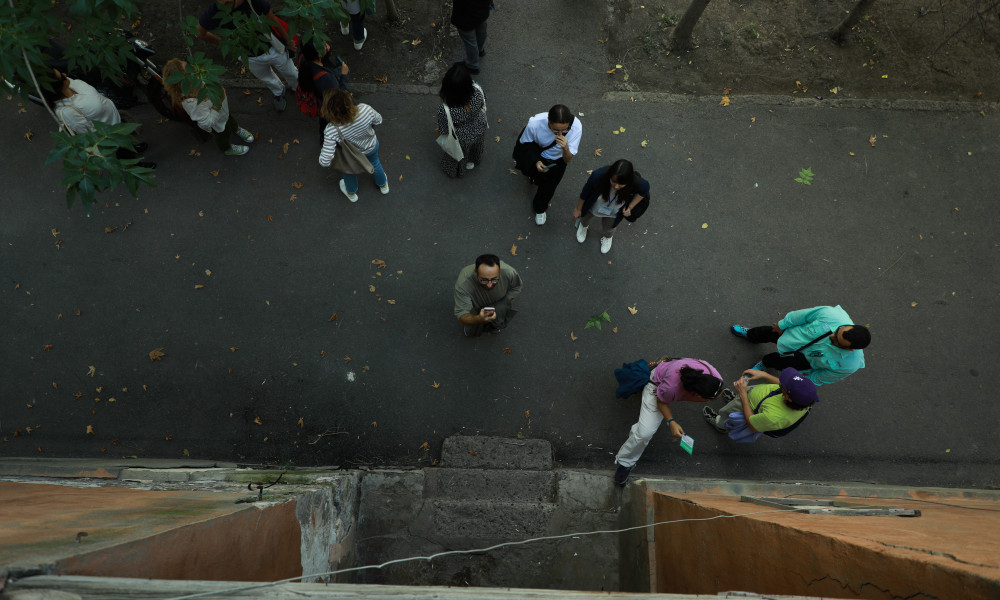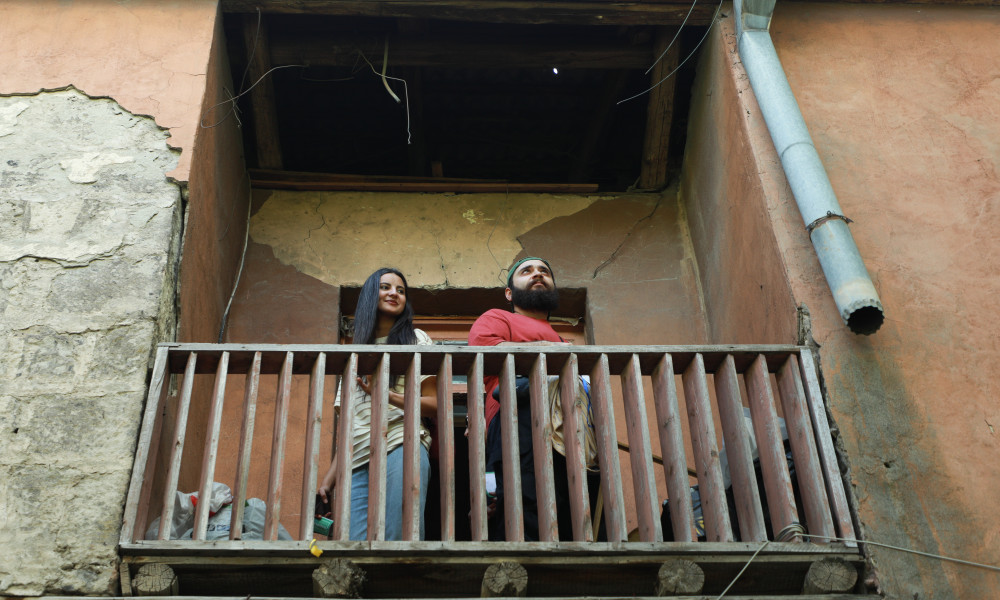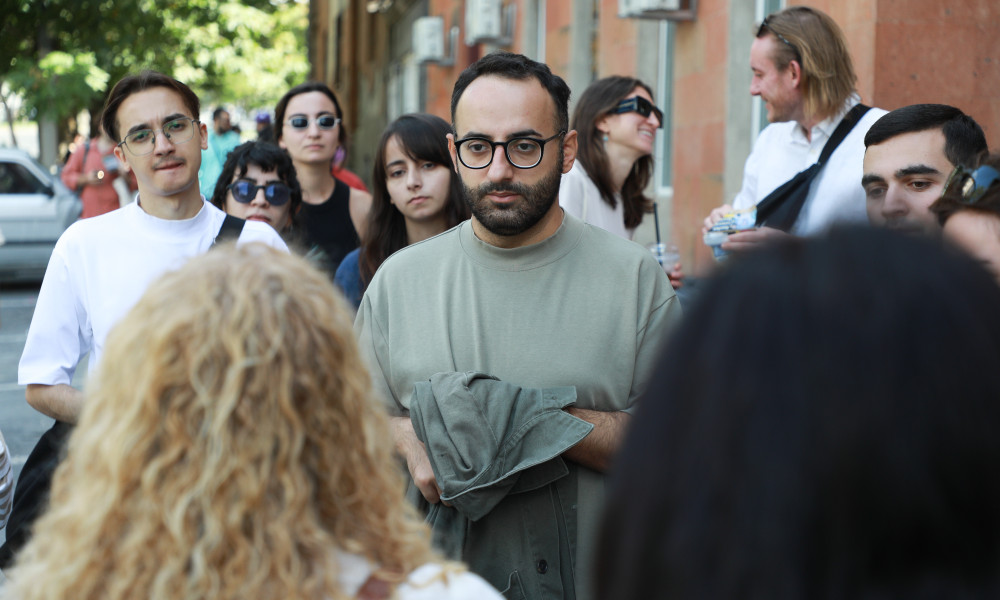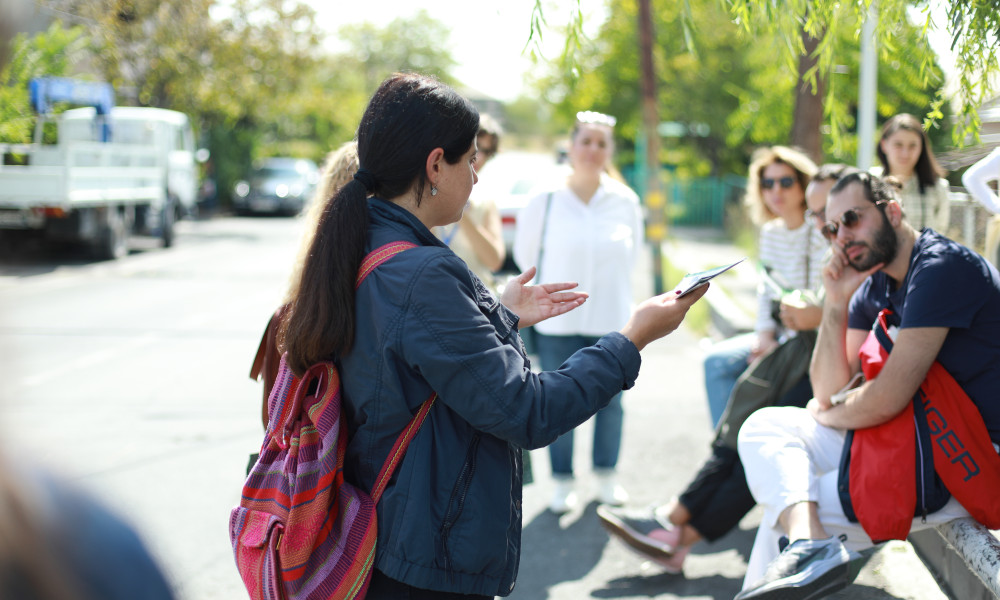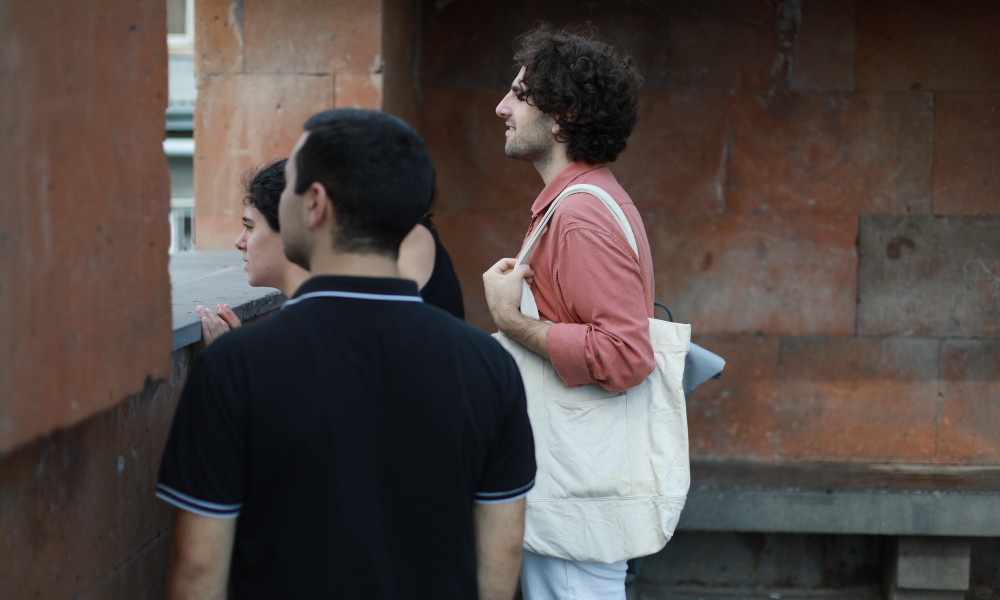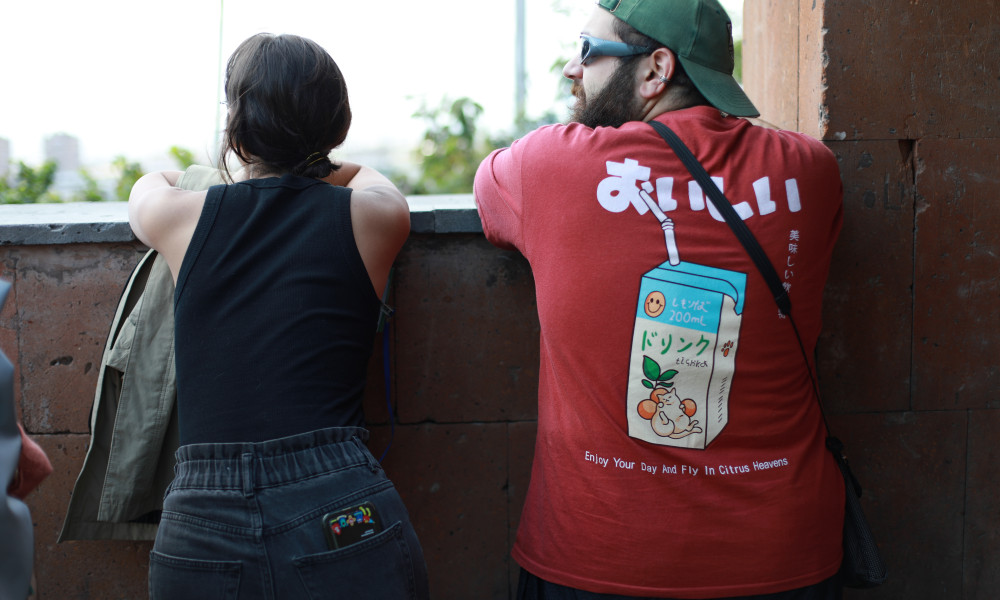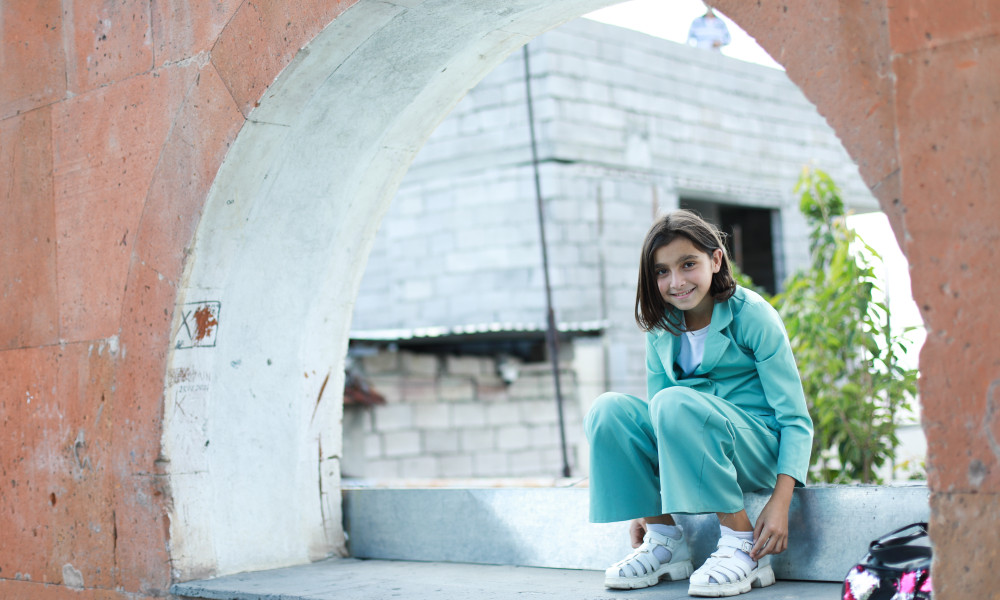Traces of the complex past are often embedded in urban spaces and architectural monuments. The clues carrying various symbols and messages, however, remain unseen unless brought to life by people and their diverse stories. As part of the "School of Complex Past: Migration," alternative educational programme participants joined the memory tour of one such unique case—the Malatia-Sebastia district of Yerevan—and explored how the traumatic and devastating events of the 20th century contributed to the formation of the neighbourhood and its distinctive community.
The "From Sebastia to Sebastia: Tracing Genocide Memories" memory tour is a result of the long-term research conducted by the "BANALIK – Armenian Critical Memory Studies Initiative." The members of the collective have been studying the Soviet and post-Soviet topography of the Malatia-Sebastia district for months, focusing particularly on the practices of commemoration for the Armenian genocide within the urban environment. One of the key elements and methodological nuances was the oral (hi)stories gathered as a result of in-depth interviews, which played a crucial role in implementing the project and demonstrating how Armenians forcibly displaced from Malatya and Sebastia in Turkey during the Armenian Genocide eventually settled in Armenia and established the new Malatia-Sebastia. The neighbourhood itself is a portrayal of a complex past, with its multiple layers revealing stories of migration, forced displacement, refugeehood, trauma, loss, and the resilience of life.
In the framework of the “School of Complex Past: Migration” the memory tour was carried out by the members of the “BANALIK” collective— Hourig Attarian, Armenuhy Nikoghosyan, and Nelly Manucharyan.
The walk commenced at “Weronika’s kindergarten.” The building was founded by local people who migrated to Soviet Armenia from Western Armenia/Turkey. The informative materials developed as part of the "From Sebastia to Sebastia" project stress that the educational centre was distinguished by its emphasis on encouraging diligence in children from an early age. In the past, the space hosted workshops in pottery, embroidery, painting, dance, and other disciplines of arts and crafts.
The next stop was the former Cocoon factory, built during the early Soviet period. Hourig Attarian emphasised the once vibrant life of the district and the direct impact of the factories on it for the participants of the "School of Complex Past: Migration". In this regard, another influential destination was the "Metaks" silk factory, the scent of its threads lingering in the memories of many former employees.
The Senekerimyan building is one of the facilities constructed by survivors of the Armenian Genocide in Sebastia that still stands today. Upon entering the building, the initiators of the "From Sebastia to Sebastia" memory tour elaborated on how many French-Armenians migrated to Armenia in the 1930s and 1940s due to Soviet propaganda aimed at the repatriation of Diaspora Armenians. Several of such families lived in the two-story Senekerimyan house made of tufa, which now stands as a testament to the migration from Marseille to Malatia-Sebastia.
In the urban spaces of Malatia-Sebastia, the gardens and parks reflect the rise of nationalism and the emergence of discourse surrounding the Armenian Genocide in the Soviet Union during the 1960s. Remarkably prominent among these are Azatamartiks (freedom fighters in Armenian) Park, the fountain-memorial dedicated to the martyrs of the 1915 Armenian Genocide, and the park honouring the memory of the Malatya residents who were murdered during the Armenian Genocide. The members of the "BANALIK" collective elucidated that these sites are considered sacred by the local community, as they are the venues for commemoration ceremonies of the traumatic and devastating events of the complex past. Armenuhy Nikoghosyan, a member of the "BANALIK" collective, pointed out the eagle statue in Azatamartiks Park, which is a tribute to the victims of the Armenian Genocide, the Great Patriotic War, and the Nagorno-Karabakh wars, while the pedestal once held the statue of the Soviet politician Lavrentiy Beria.
The tour concluded near Primary School No. 89, named after Daniel Varoujan. During the early Soviet period, the educational centre was first named after Joseph Stalin, later after Lavrentiy Beria, and only in the 1960s, it was renamed to honour the Armenian poet Daniel Varoujan from Sebastia (Turkey).
At the end of the memory tour, the "BANALIK: Armenian Critical Memory Studies Initiative" shared printed maps of the "From Sebastia to Sebastia" project with the participants of the "School of Complex Past: Migration" which will serve as a foundation for continuous studies and discoveries of the Malatia-Sebastia district.
The “School of Complex Past” is an annual project that fosters public discourse around the undisclosed past through alternative education. This year, it took place on the 20th, 21st, and 22nd of September. The “School of Complex Past։ Migration” program was implemented by CSN Lab with the support of the Dansk Kulturinstitut / Danish Cultural Institute (DCI) within the New Democracy Fund (NDF) program and the Women’s Fund Armenia (WFA).

